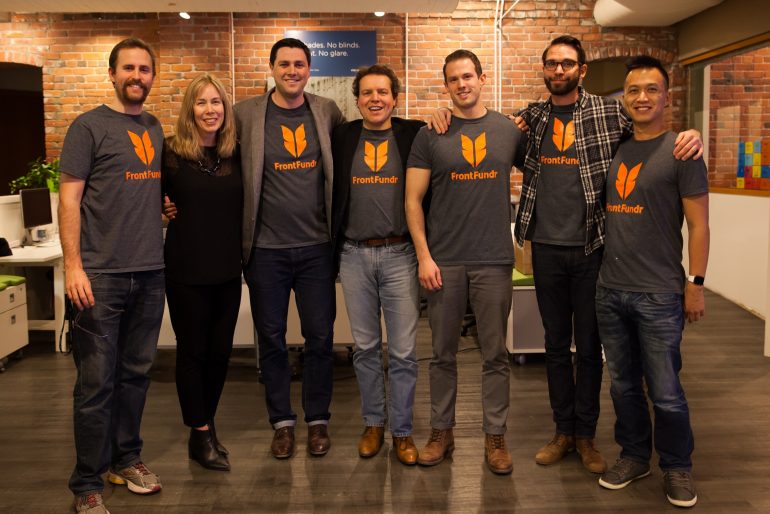Vancouver-based FrontFundr announced just before the New Year that it raised $650,000 on its own equity crowdfunding platform (exceeding its target by 130 percent, with 200 investors). It was an impressive example of a tech company ‘eating its own dog food’ after helping nine other Canadian companies get funded, in sums ranging from $50,000 to $2 million.
“It’s really new, what we’re doing. So we’re creating awareness in the market. In a way, we have to create the need.”
“We’ve been helping businesses across Canada raise funds from the public over the past eighteen months,” said FrontFundr CEO Peter-Paul Van Hoeken, whose company launched in May 2015. “We decided it was our turn to walk our talk. We’re a young company too in need of capital, so it made perfect sense to use our own platform and tap into our brand champions for our raise.”
Rapidly growing from startup to scale-up, with a national presence across Canada, it is now looking to expand to the US marketplace.
Equity crowdfunding is still a relatively new thing, allowing entrepreneurs to raise capital from a far wider pool of funders contributing as little as $100 (spread out over a far greater number). It’s different from traditional crowdfunding (usually involving a donation in return for a product or service); FrontFundr’s platform lets investors put in their money in return for an actual ownership stake in the company.
This allows startups to go beyond the traditional avenues of seeking out angel investors and venture capitalists. That’s a big potential win for both business owners and investors — but the catch is in the regulation.
Regulations around equity crowdfunding (to protect investors and keep companies on the up and up) only came into being in the US and Canada around the beginning of 2016. “In equity crowdfunding, you’re going to a wider public that has never invested before and you need protections for them,” Van Hoeken says. “Also last year, they enabled rules for certain companies with regard to disclosure and how much an investor can invest, which allowed those investors to invest in private companies.”
In Canada, there’s an additional challenge: 10 different provincial securities regulators across the country, with three different flavors of regulation, Van Hoeken explains. “Since it’s not harmonized, it can be difficult for a company to raise money in Canada, across the country.”
New and relatively untested regulation, along with a lack of harmonization, creates uncertainty. That’s why FrontFundr sees part of its role as educating the public about the potential of equity crowdfunding. “The challenges in building this company, and one challenge we’re dealing with, is that we’re building a market. It’s really new, what we’re doing. So we’re creating awareness in the market. In a way, we have to create the need, explain how this is possible and take investors through the process.”
The recent funding round will help them scale up to increase that effort largely through sales and marketing. “We’ve really grown in the last year with 13 employees — 10 who are full time. There used to be just three of us. We’ll be expanding our presence across Canada… we’ll also be ramping up in terms of investing in the platform.”


